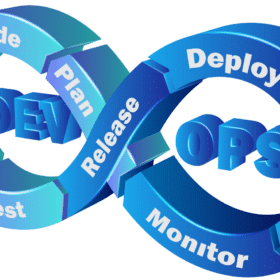Flexible Policy is Critical for Telecom Innovation During Economic Turbulence
Telecom operators and their customers love freedom. So why don’t they have it?
Nobody likes lock-ins, especially during times of economic turbulence and inflation. Consumers, for example, hate being forced into contracts where they have to buy a big bundle of services just to get the ones they really want. And telecom operators hate being locked into a single vendor’s ecosystem instead of being able to choose best-of-breed hardware, software and services from multiple suppliers.
Lock-in contempt isn’t a new phenomenon, of course, but hyper-inflation and hyper-competition are among the recent factors that have elevated it to another level. On the consumer side, a prime example is over-the-top (OTT) streaming video services such as DIRECTV NOW, PlayStation Vue and Sling TV. In their first few years they were a welcome alternative to traditional cable and satellite services because they gave consumers more choices for less money. For instance, although they sold channels in bundles, their selections were bigger and thus closer to the à la carte model that consumers said they wanted — and still do.
But over the past few years OTT streamers have devolved back to the traditional cable-satellite model, offering a limited selection of packages that force consumers to pay for dozens of networks that they don’t want to get the few that they do. The good news is that this sets up the opportunity for telecom operators to innovate and transform that pain point into a business opportunity while giving consumers more control over their streaming expenses.
What governs this in a practical telecom environment is the implementation of policy control (literally Policy Control function in 5G) and billing systems (BSS). Flexibility and ease of changing the rules for a user’s account will help drive choice for end customers – and that’s what they want.
Innovation to deliver subscriber control
One recent example is Stream from Virgin Media, which offers subscriptions to OTT streamers such as Disney+ and Netflix, as well as channel bundles centered around interests such as kids programming and live sports. What makes this service stand out for consumers is that they can switch on and switch off streaming services via the Virgin Media service.
And there’s more. The more subscriptions that customers buy, the more they save. This model helps make Virgin Media more attractive to investors and analysts because it helps improve two key metrics: churn and average revenue per user (ARPU).
“You can change your subscriptions anytime, meaning you’ll only pay for what you plan to use each month, and get one simple bill for all of it,” Virgin Media says. “What’s more, we’ll give you 10% credit back on every new subscription you add to Stream.”
Virgin’s service is also a hit with many reviewers:
- Trusted Reviews: “One of the biggest draws about the Stream box is the 10% discount Virgin Media offers on any streaming services you choose to pay for through the company. It’s an interesting idea that effectively saves you money the longer you subscribe to certain OTT streaming services.”
- Pocket-lint: “Part of the appeal is that all of the channels and streaming platforms available on Stream can be added on a rolling 30-day contract, so you can chop and change your content lineup depending on personal choice and finances on a monthly basis. That’s great for those worried about the cost of living.”
Deploying architecture that unleashes innovation
Stream is another example of the kind of flexible, innovative, customer-friendly service that mobile operators and other telecom providers need to offer in today’s market, where consumers are more price-sensitive than ever due to inflation and where they have more choices than ever. For example, in the 5G market, greenfield operators such as 1&1 Drillisch, Dish and Rakuten mean even more competition for incumbents.
But to deliver that kind of flexibility with pricing and control, telecom providers first must make their BSS flexible. And for that operators need virtualized, open architecture for policy and charging. Policy and charging solutions go together – but that’s easier said than done. Most operators are saddled with a hodge-podge of legacy systems, whose proprietary vendor designs and lock-ins have limited the operator’s ability to offer must-have features that give subscribers more control.
When deploying virtualized architecture for policy, bear in mind that:
- Policy rules should be represented in a more intuitive way (eg, a policy builder/wizard function).
- Policy changes should be in the form of “change once and roll out to different systems.” It should not involve multiple re-entries.
- It has to be adaptable to changing commercial climate, responding to business needs rather than the lowest common denominator of what could be implemented.
And some challenges include:
- Managing identity and authorization from the different access types that the user may come in from.
- Ensuring a clean, understandable, consumption record and audit trail.
- Integrating with BSS and other legacy systems. In telecoms billing systems have been a byword for large-scale, complex projects.
Although today’s inflation will subside, eventually it will come back because the economy is cyclical, but competition is perpetually fierce. By implementing a highly flexible platform for pricing and control now, telecom operators can position themselves to attract, retain and upsell consumers no matter what the economy and marketplace throw at them.




